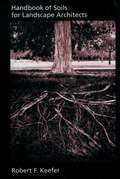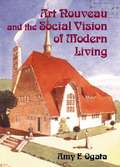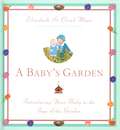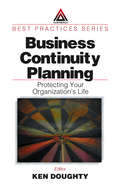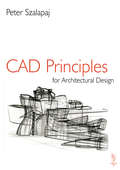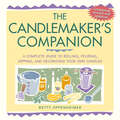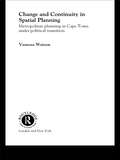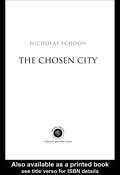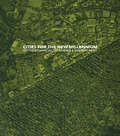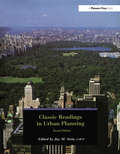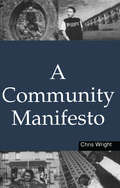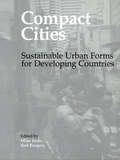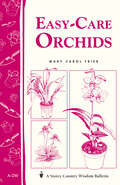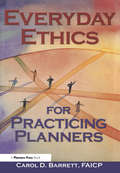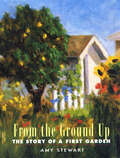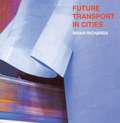- Table View
- List View
Handbook of Soils for Landscape Architects
by Robert F. KeeferWritten in a clear, accessible style, this book covers the fundamental aspects of soil science with an emphasis on topics useful to landscape architects and professionals in related fields. The book begins with a discussion of soil surveys developed in different countries, followed by a concise description of soil components and how the interactions between air, water, and nutrients affect plant growth. It examines methods for controlling erosion, particularly in light of modern irrigation techniques. It describes the chemistry of plant growth, devotes four chapters to macro- and micro-nutrients, and features a detailed discussion of ways to diagnose and correct plant disorders. It also looks at the engineering aspects of soils and includes a detailed list of references for further information. Written by an experienced teacher with an extensive background in landscape architecture, this volume will be an invaluable source for students and researchers in architecture, horticulture, and urban planning.
Art Nouveau And The Social Vision Of Modern Living: Belgian Artists In A European Context (Modern Architecture And Cultural Identity Ser.)
by Amy F. Ogata Richard A. EtlinArt Nouveau and the Social Vision of Modern Living considers the roles of primitivism and nationalism in Belgian Art Nouveau architecture and design.
Authentic Color Schemes for Victorian Houses: Comstock's Modern House Painting, 1883
by E. K. Rossiter F. A. WrightWhen the authors, a pair of respected architects, first published this beautiful book in the late Victorian era, they meant it as a wakeup call to the forward-looking homeowners of the time — inviting them to eschew "the old puritanical hatred of color, which found its natural outcome in white houses with green blinds" and join in the revolutionary trend toward "advanced notions, in which the more positive colors find a chance of expression." The book helped homeowners to attain this goal through its presentation of full-color illustrations of attractive, up-to-date color schemes for houses, with special attention given to the refined lines of Queen Anne-style homes.The heart of the book is the section of 20 exquisite color plates — each reproducing a flawlessly executed architectural drawing that shows the color possibilities for a specific house, and each accompanied by an extensive written description of the colors to be used for exterior walls and trim. An informative introductory section gives a clear explanation of how to mix primary and secondary colors to achieve such popular, mellow tones of the period as olive, russet, citrine, buff, plum, and sage. This authentic source of inspiration and suggestions will be prized by restorationists, architects, home-builders, and lovers of Victoriana.
A Baby's Garden: Introducing Your Baby to the Joys of the Garden
by Elizabeth St. MuseColorful paintings of birds, insects, flowers, and trees illustrate this keepsake journal designed to record memories spent in the garden between mother and child. Consumable.
Business Continuity Planning: Protecting Your Organization's Life
by Ken DoughtyOnce considered a luxury, a business continuity plan has become a necessity. Many companies are required to have one by law. Others have implemented them to protect themselves from liability, and some have adopted them after a disaster or after a near miss. Whatever your reason, the right continuity plan is essential to your organization. Business
CAD Principles for Architectural Design
by Peter SzalapajCAD Principles for Architectural Design is aimed at design students and practitioners interested in understanding how CAD is used in architectural practice. This book makes connections between the basic operations that are common to most CAD systems, and their use in practice on actual architectural design projects. The ways in which CAD is integrated into the design processes of several leading edge practices is illustrated. Arising from these case studies is the emergence of a contemporary phenomenon of integrated CAD, in which all aspects of design schemes are brought together within computational frameworks that support the analysis of design proposals.Szalapaj's view of CAD is one in which computers constitute a medium in which designers can express design ideas, rather than viewing computers as problem solving machines. For creative designers to successfully exploit CAD technology, CAD systems should reflect designers' intuitions as described by designers themselves
CAD Principles for Architectural Design
by Peter SzalapajCAD Principles for Architectural Design is aimed at design students and practitioners interested in understanding how CAD is used in architectural practice. This book makes connections between the basic operations that are common to most CAD systems, and their use in practice on actual architectural design projects. The ways in which CAD is integrated into the design processes of several leading edge practices is illustrated. Arising from these case studies is the emergence of a contemporary phenomenon of integrated CAD, in which all aspects of design schemes are brought together within computational frameworks that support the analysis of design proposals.Szalapaj's view of CAD is one in which computers constitute a medium in which designers can express design ideas, rather than viewing computers as problem solving machines. For creative designers to successfully exploit CAD technology, CAD systems should reflect designers' intuitions as described by designers themselves
The Candlemaker's Companion: A Complete Guide to Rolling, Pouring, Dipping, and Decorating Your Own Candles
by Betty OppenheimerEnjoy some homemade glow. From wax to wick to wrapping, The Candlemaker&’s Companion is a definitive guide to modern candle making. Learn how to create rolled, poured, molded, and dipped candles; play with your favorite scents and colors; and use specialty techniques to design glowing luminaria, candle holders, and other gorgeous accessories. With illustrated directions, complete source lists, and plenty of practical advice, Betty Oppenheimer invites even the beginner candlemaker to get in on the action. Fill your house with the warm light and enticing fragrances that only candles can bring.
Change and Continuity in Spatial Planning: Metropolitan Planning in Cape Town Under Political Transition (Cities And Regions Ser.)
by Vanessa WatsonChange and Continuity in Spatial Planning addresses a question of enduring interest to planners: can planning really bring about significant and positive change? In South Africa the process of political transition appeared to create the preconditions for planners to demonstrate how their traditional humanitarian and environmental concerns could find concrete expression in the reshaping of the built environment.Integral to this story is how planning practices have been shaped by the past, in a rapidly changing context characterised by a globalising economy, new systems of governance, a changing political ideology, and a culture of intensifying poverty and diversity. More broadly, the book addresses the issue of how planners use power, in situations which themselves represent networks of power relations, where both planners and those they engage with operate through frames of reference fundamentally shaped by place and history.
Change and Continuity in Spatial Planning: Metropolitan Planning in Cape Town Under Political Transition
by Vanessa WatsonChange and Continuity in Spatial Planning addresses a question of enduring interest to planners: can planning really bring about significant and positive change? In South Africa the process of political transition appeared to create the preconditions for planners to demonstrate how their traditional humanitarian and environmental concerns could find concrete expression in the reshaping of the built environment.Integral to this story is how planning practices have been shaped by the past, in a rapidly changing context characterised by a globalising economy, new systems of governance, a changing political ideology, and a culture of intensifying poverty and diversity. More broadly, the book addresses the issue of how planners use power, in situations which themselves represent networks of power relations, where both planners and those they engage with operate through frames of reference fundamentally shaped by place and history.
The Chosen City
by Nicholas SchoonThere is endless talk about the need for an urban renaissance; can it happen in the real world? In this broad, challenging and highly engaging book, Nicholas Schoon argues that the foremost priority for regeneration is to make neighbourhoods and cities places where people with choices choose to live.The author surveys the last two centuries of metropolitan growth and decay, analyzes the successes and failures of recent changes in urban policy and proposes a wide range of radical measures to make the renaissance a reality. Comprehensively researched, The Chosen City is a wake up call for everyone interested and involved in urban regeneration - degree students and academics, planning and housing professionals, architects, surveyors, developers and politicians. The text is illustrated with powerful black and white images from a leading national newspaper photographer.
The Chosen City
by Nicholas SchoonThere is endless talk about the need for an urban renaissance; can it happen in the real world? In this broad, challenging and highly engaging book, Nicholas Schoon argues that the foremost priority for regeneration is to make neighbourhoods and cities places where people with choices choose to live.The author surveys the last two centuries of metropolitan growth and decay, analyzes the successes and failures of recent changes in urban policy and proposes a wide range of radical measures to make the renaissance a reality. Comprehensively researched, The Chosen City is a wake up call for everyone interested and involved in urban regeneration - degree students and academics, planning and housing professionals, architects, surveyors, developers and politicians. The text is illustrated with powerful black and white images from a leading national newspaper photographer.
Cities for the New Millennium
by Andrew Saint Marcial EcheniqueCities for the New Millennium is the outcome of a joint conference held in Salford in July 2000 by the Royal Institute of British Architects and the University of Cambridge's Department of Architecture. It tackles these questions in the light of the Urban Task Force's report about the future of Britain's cities and communities, but sets them in an international and historical context. Professionals - architects, engineers and developers as well as academics from different countries and disciplines here lavish their expertise on issues of transportation, density, land use, risk and energy saving; others present urban-scale buildings or landscapes that have been judged inspirational or inventive. This book, therefore, is not just about theories of urbanism. It reveals how co-operation and debate between different parties and professions can illuminate the creative kind of urban development we should be aiming for.
Cities for the New Millennium
by Marcial Echenique Andrew SaintCities for the New Millennium is the outcome of a joint conference held in Salford in July 2000 by the Royal Institute of British Architects and the University of Cambridge's Department of Architecture. It tackles these questions in the light of the Urban Task Force's report about the future of Britain's cities and communities, but sets them in an international and historical context. Professionals - architects, engineers and developers as well as academics from different countries and disciplines here lavish their expertise on issues of transportation, density, land use, risk and energy saving; others present urban-scale buildings or landscapes that have been judged inspirational or inventive. This book, therefore, is not just about theories of urbanism. It reveals how co-operation and debate between different parties and professions can illuminate the creative kind of urban development we should be aiming for.
Classic Readings in Urban Planning
by Jay SteinThis new edition of "the best anthology in planning" includes 33 selections by many of the profession's most respected thinkers and eloquent writers. Returning editor Jay M. Stein chose the articles, about half of them new to this edition, based on suggestions from colleagues and students who used the first edition, recommendations from planning scholars, awards for writing in the field of planning, and his own review of recent planning literature. Classic Readings in Urban Planning offers an unparalleled depth of coverage and range of perspectives on traditional aspects of planning as well as on important contemporary issues. This is an exceptional main or supplementary textbook for advanced undergraduate or beginning graduate level students in urban and regional planning. As a general overview of the field of urban planning, it is also an excellent choice for planning commissioners, practicing planners, and professionals in related fields such as environmental and land use law, architecture, and government. An abstract introduces each reading, and each section includes suggestions for additional readings suitable for more extensive study. Many of these are also "classics" that could not be included as a main selection.
Classic Readings in Urban Planning: An Introduction
by Jay SteinThis new edition of "the best anthology in planning" includes 33 selections by many of the profession's most respected thinkers and eloquent writers. Returning editor Jay M. Stein chose the articles, about half of them new to this edition, based on suggestions from colleagues and students who used the first edition, recommendations from planning scholars, awards for writing in the field of planning, and his own review of recent planning literature. Classic Readings in Urban Planning offers an unparalleled depth of coverage and range of perspectives on traditional aspects of planning as well as on important contemporary issues. This is an exceptional main or supplementary textbook for advanced undergraduate or beginning graduate level students in urban and regional planning. As a general overview of the field of urban planning, it is also an excellent choice for planning commissioners, practicing planners, and professionals in related fields such as environmental and land use law, architecture, and government. An abstract introduces each reading, and each section includes suggestions for additional readings suitable for more extensive study. Many of these are also "classics" that could not be included as a main selection.
A Community Manifesto
by Chris WrightCivilizations fail when they become trapped in a way of looking at the world that no longer works. For many, globalization is pushing us to the edge of disaster - an onward march of blinkered vision, encouraging passivity, moral blindness and a culture of dependency.A Community Manifesto is an elegantly written polemic offering a new way of looking at our social, cultural and economic realities. Tackling the crucial dimensions of personal responsibility, consensus and community, it shows how we can find a new language through which we can reinvigorate our individual and social lives, developing the resourcefulness we need but which proves so difficult to cultivate. The vision it presents is persuasive and very timely - only by building community can human society evolve and progress.
A Community Manifesto
by Chris WrightCivilizations fail when they become trapped in a way of looking at the world that no longer works. For many, globalization is pushing us to the edge of disaster - an onward march of blinkered vision, encouraging passivity, moral blindness and a culture of dependency.A Community Manifesto is an elegantly written polemic offering a new way of looking at our social, cultural and economic realities. Tackling the crucial dimensions of personal responsibility, consensus and community, it shows how we can find a new language through which we can reinvigorate our individual and social lives, developing the resourcefulness we need but which proves so difficult to cultivate. The vision it presents is persuasive and very timely - only by building community can human society evolve and progress.
Compact Cities: Sustainable Urban Forms for Developing Countries
by Rod Burgess Mike JenksThis collection of edited papers forms part of the Compact City Series, creating a companion volume to The Compact City (1996) and Achieving Sustainable Urban Form (2000) and extends the debate to developing countries. This book examines and evaluates the merits and defects of compact city approaches in the context of developing countries in Africa, Asia and Latin America. Issues of theory, policy and practice relating to sustainability of urban form are examined by a wide range of international academics and practitioners.
Compact Cities: Sustainable Urban Forms for Developing Countries
by Mike Jenks Rod BurgessThis collection of edited papers forms part of the Compact City Series, creating a companion volume to The Compact City (1996) and Achieving Sustainable Urban Form (2000) and extends the debate to developing countries. This book examines and evaluates the merits and defects of compact city approaches in the context of developing countries in Africa, Asia and Latin America. Issues of theory, policy and practice relating to sustainability of urban form are examined by a wide range of international academics and practitioners.
Easy-Care Orchids: Storey's Country Wisdom Bulletin A-250 (Storey Country Wisdom Bulletin)
by Mary Carol FrierIt's Never Been Easier to Grow Orchids at HomeHave you heard that orchids are impossible to cultivate? Do you love orchids' exotic flowers but despair of ever having one survive in your home? Thing again! With simple instructions and straightforward advice from professional orchid grower Mary Carol Frier, you'll find that orchids can thrive on your home windowsill, rewarding you year after year with gorgeous blooms.What makes an orchid "easy care"? The six orchids featured in Easy-Care Orchids are surprisingly hardy flowers with minimal maintenance requirements, and they do well in the environmental conditions found in most North American homes. Armed with the basic growing information in this bulletin, you'll enjoy the unique pleasure of adorning your home with the strange and magical beauty of orchids.
Everyday Ethics for Practicing Planners
by Carol Barrett"This book is on the suggested reading list for planners preparing to take the AICP exam. As veteran planner the author points out, the most troublesome conflicts for planners aren't between good and bad, they're between competing good, neither of which can be fully achieved. The 54 real-world scenarios described here typify the tough moral dilemmas that confront today's practioners. The author offers planners a way to recognize the ethical conflicts that arise in everyday practice, analyze them using ""practical moral reasoning,"" apply relevant sections of the AICP Code of Ethics and the APA/AICP Ethical Principles in Planning (both of which are included in full), and decide on the best course of action. The author tells a series of stories-each one a sticky situation that could confront a typical planner. Barrett points out the ethical issues, identifies possible alternatives, and cities relevant sections of the AICP Code. Finally, the author discusses the pros and cons of each alternative. Five particularly complex scenarios are especially intended for group discussion. Individuals studying for the AICP exam will find this book indispensable. But it also should be required reading for every planner who struggles to act ethically and for planning student who wants to understand how professionals define and serve the public interest. Planning agencies, private consulting firms, and planning commissions can use its realistic scenarios to jump start group discussions and workshops on ethical planning."
Everyday Ethics for Practicing Planners
by Carol Barrett"This book is on the suggested reading list for planners preparing to take the AICP exam. As veteran planner the author points out, the most troublesome conflicts for planners aren't between good and bad, they're between competing good, neither of which can be fully achieved. The 54 real-world scenarios described here typify the tough moral dilemmas that confront today's practioners. The author offers planners a way to recognize the ethical conflicts that arise in everyday practice, analyze them using ""practical moral reasoning,"" apply relevant sections of the AICP Code of Ethics and the APA/AICP Ethical Principles in Planning (both of which are included in full), and decide on the best course of action. The author tells a series of stories-each one a sticky situation that could confront a typical planner. Barrett points out the ethical issues, identifies possible alternatives, and cities relevant sections of the AICP Code. Finally, the author discusses the pros and cons of each alternative. Five particularly complex scenarios are especially intended for group discussion. Individuals studying for the AICP exam will find this book indispensable. But it also should be required reading for every planner who struggles to act ethically and for planning student who wants to understand how professionals define and serve the public interest. Planning agencies, private consulting firms, and planning commissions can use its realistic scenarios to jump start group discussions and workshops on ethical planning."
From the Ground Up: The Story of a First Garden
by Amy Stewart"A treasure trove of delightful stories, filled with wit, wisdom, and know-how for all gardens—a rare horticultural treat." —Carl H. Klaus, author of My Vegetable Love and Weathering Winter Amy Stewart had a simple dream. She yearned for a garden filled with colorful jumbles of vegetables and flowers. After she and her husband finished graduate school, they pulled up their Texas roots and headed west to Santa Cruz, California. With little money in their pockets, they rented a modest seaside bungalow with a small backyard. It wasn't much—a twelve-hundred-square-foot patch of land with a couple of fruit trees, and a lot of dirt. A good place to start. From the Ground Up is Stewart's quirky, humorous chronicle of the blossoms and weeds in her first garden and the lessons she's learned the hard way. From planting seeds her great-grandmother sends to battling snails, gophers, and aphids, Stewart takes us on a tour of four seasons in her coastal garden. Confessing her sins and delighting in small triumphs, she dishes the dirt for both the novice and the experienced gardener. Along the way, she brings her quintessential California beach town to life—complete with harbor seals, monarch butterfly migrations, and an old-fashioned seaside amusement park just down the street.Each chapter includes helpful tips alongside the engaging story of a young woman's determination to create a garden in which the plants struggle to live up to the gardener's vision.
Future Transport in Cities
by Brian RichardsCities around the world are being wrecked by the ever-increasing burden of traffic. A significant part of the problem is the enduring popularity of the private car - still an attractive and convenient option to many, who turn a blind eye to the environmental and public health impact. Public transport has always seemed to take second place to the car, and yet alternative ways of moving around cities are possible. Measures to improve public transport, as well as initiatives to encourage walking and cycling, have been introduced in many large cities to decrease car use, or at least persuade people to use their cars in different ways.This book explores many of the measures being tried. It takes the best examples from around the world, and illustrates the work of those architects and urban planners who have produced some of the most significant models of "transport architecture" and city planning. The book examines the ways in which new systems are evolving, and how these are being integrated into the urban environment. It suggests a future where it could be mandatory to provide systems of horizontal movement within large-scale development, using the analogy of the lift, upon which every high-rise building depends. In so doing, future cities could evolve without dependence on the private car.
